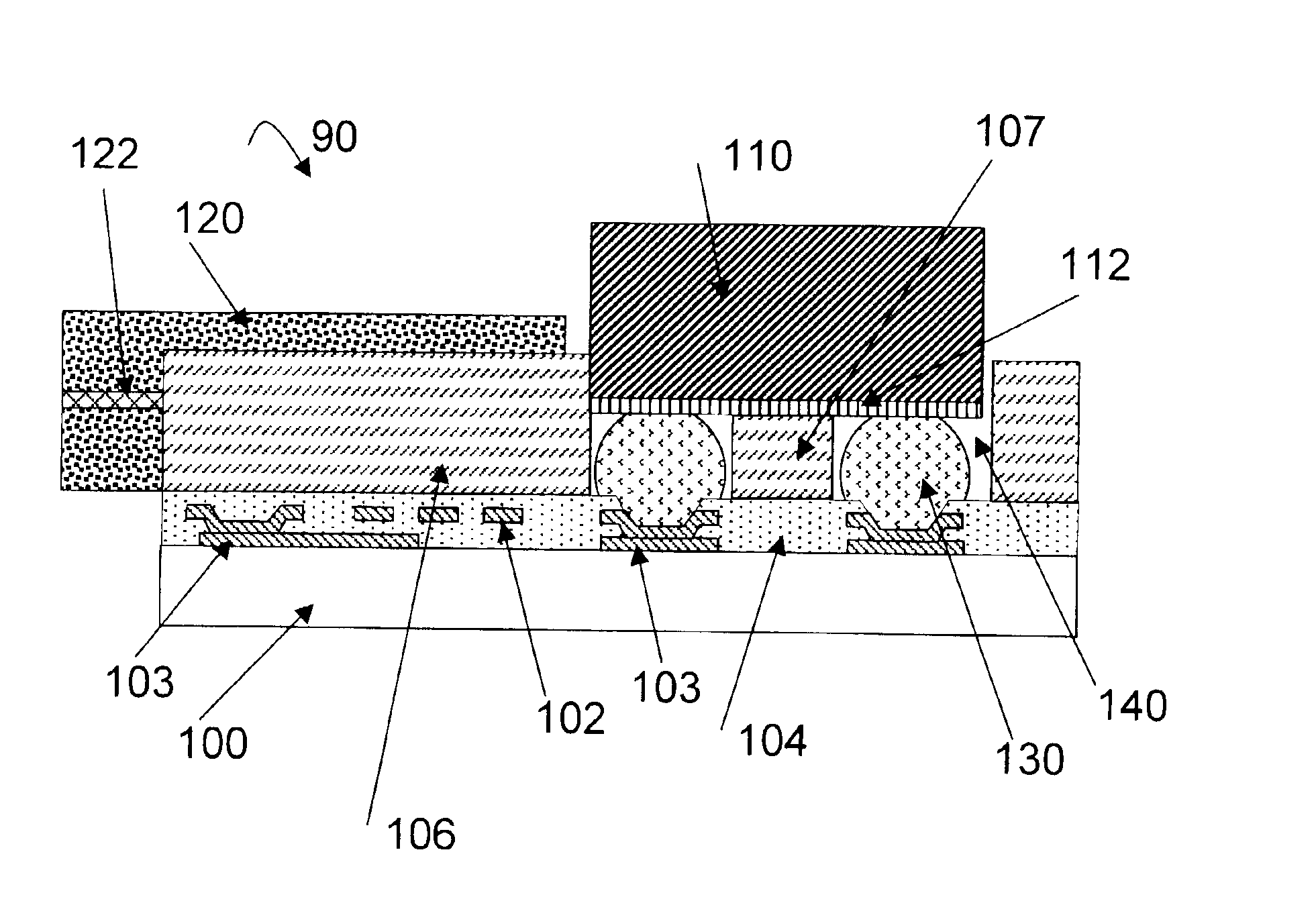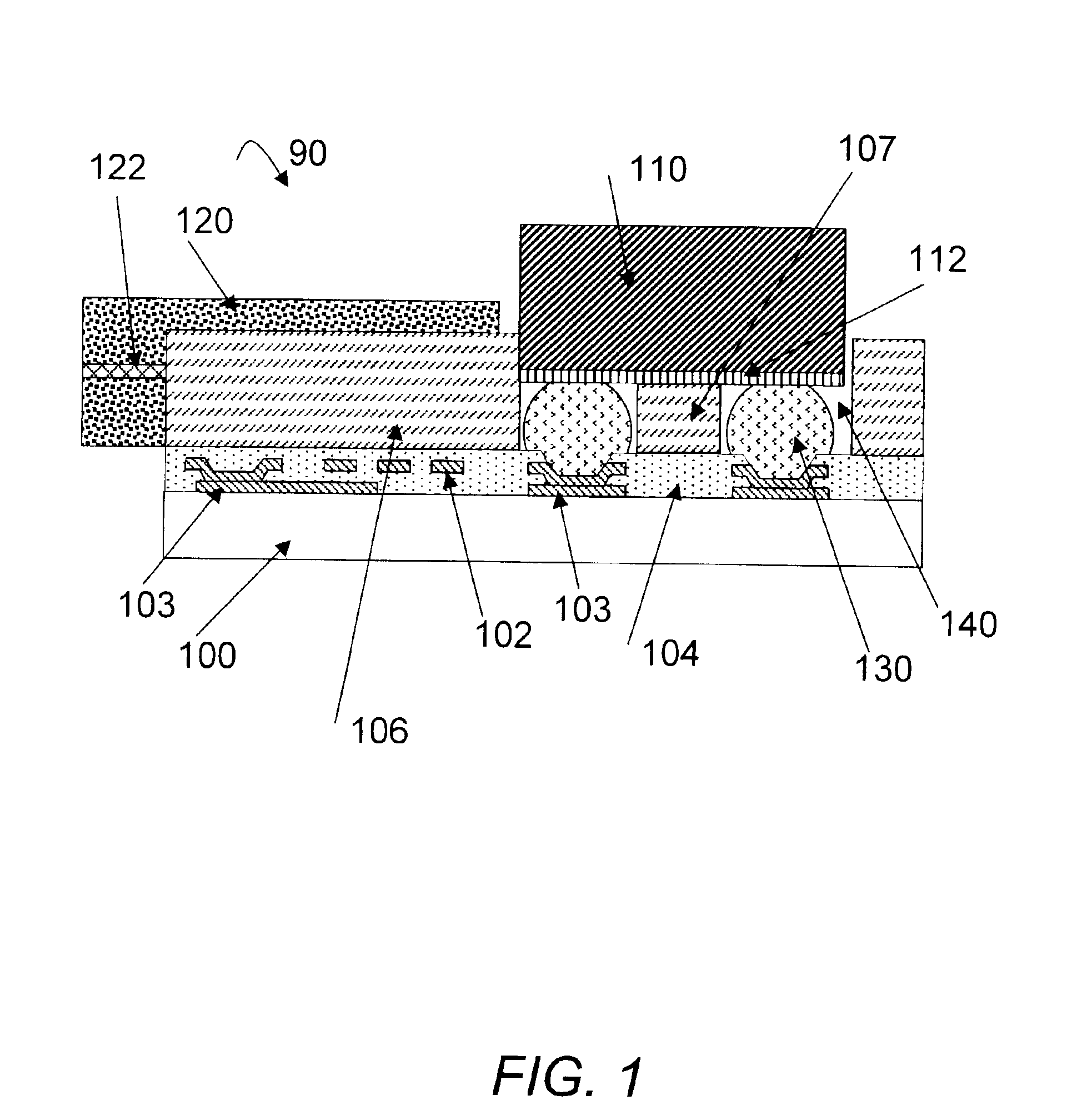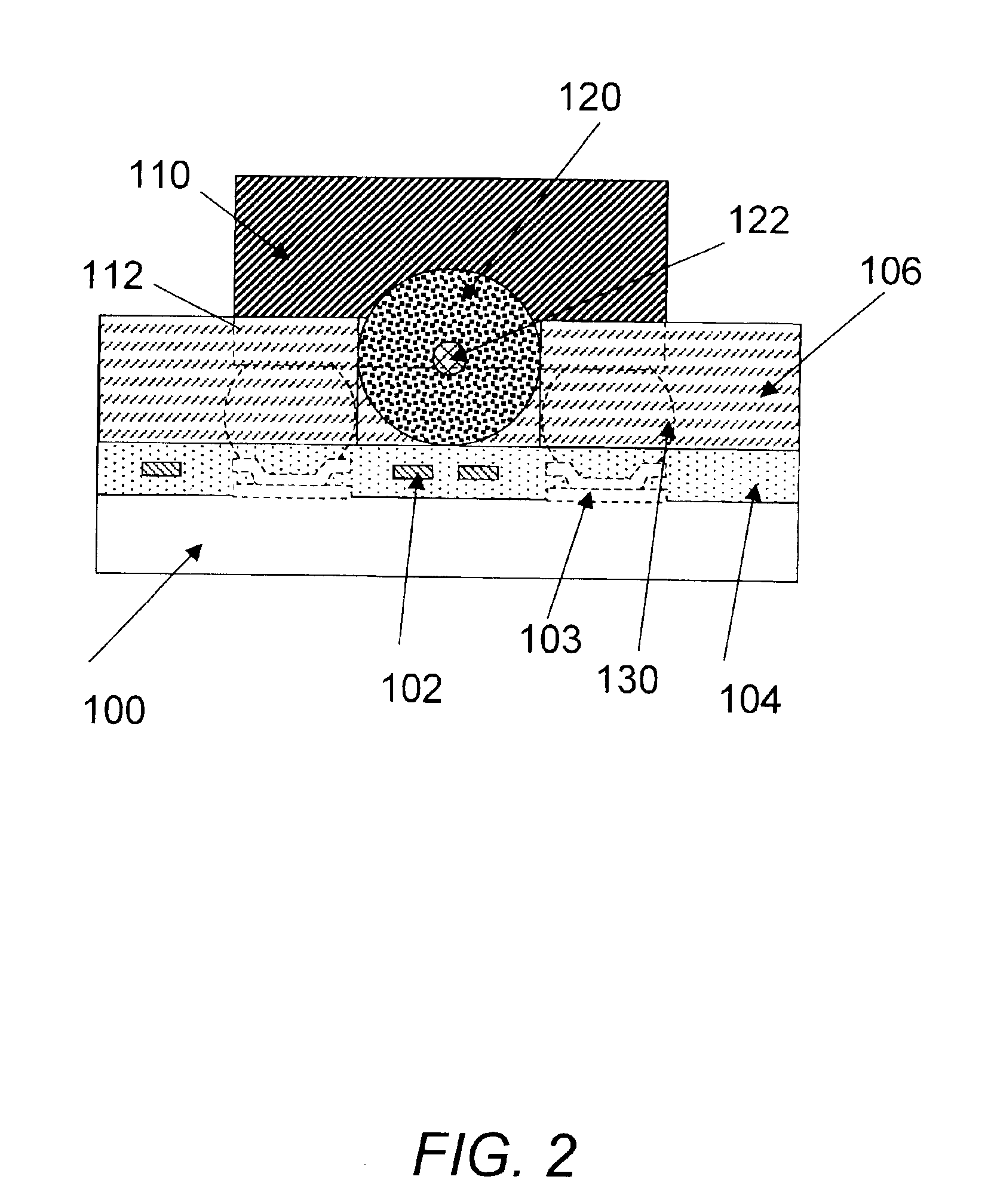Optoelectronic assembly with embedded optical and electrical components
- Summary
- Abstract
- Description
- Claims
- Application Information
AI Technical Summary
Benefits of technology
Problems solved by technology
Method used
Image
Examples
Embodiment Construction
[0028]Referring to FIG. 1, the optoelectronic assembly 90 includes a carrier substrate 100, a dielectric layer 104 with embedded patterned metal layers 102, 103, and a polymeric layer 106. Dielectric layer 104 is positioned on top of the carrier substrate 100 and the polymeric layer 106 is positioned on top of the dielectric layer 104. The thickness of the carrier substrate 100 and the dielectric layer 104 is in the range of 10 to 20 micrometers. The thickness of the polymeric layer 106 varies between 30 and 150 micrometers. The assembly 90 further includes a semiconductor die 110, connected to the patterned metal layers 103 via metal bonding pads 130. In a preferred embodiment the semiconductor die 110 is flipchip mounted into a cavity 140 formed within the polymeric layer 106. The semiconductor die 110 may be an edge emitting laser, photodiode or other semiconductor optical devices. The polymeric layer is patterned to include a groove 150, stoppers 108 (shown in FIG. 3), cavity 14...
PUM
 Login to View More
Login to View More Abstract
Description
Claims
Application Information
 Login to View More
Login to View More - R&D
- Intellectual Property
- Life Sciences
- Materials
- Tech Scout
- Unparalleled Data Quality
- Higher Quality Content
- 60% Fewer Hallucinations
Browse by: Latest US Patents, China's latest patents, Technical Efficacy Thesaurus, Application Domain, Technology Topic, Popular Technical Reports.
© 2025 PatSnap. All rights reserved.Legal|Privacy policy|Modern Slavery Act Transparency Statement|Sitemap|About US| Contact US: help@patsnap.com



